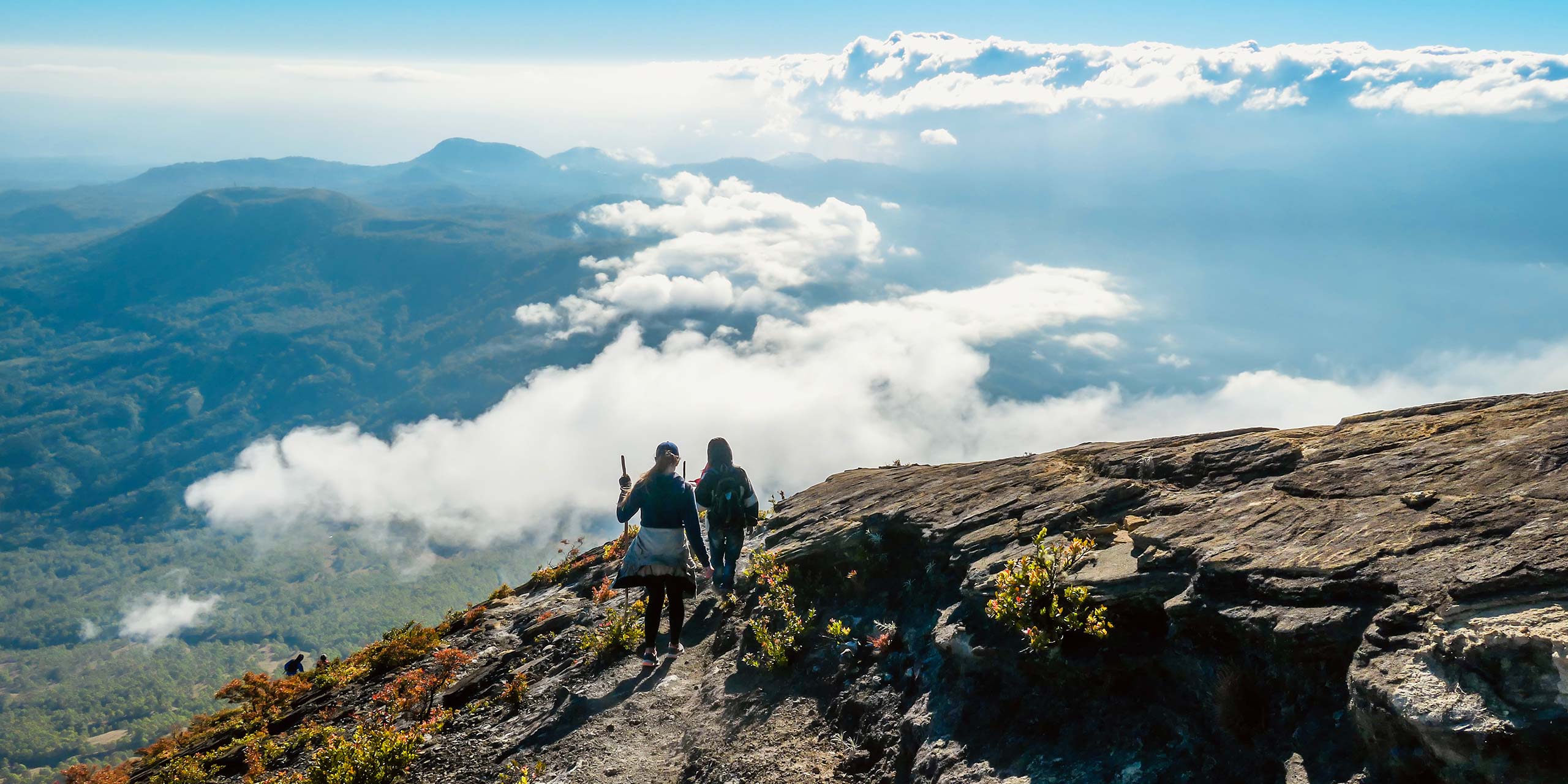
Walking like thieves, torchlights raised high in the pitch-black darkness that precedes the dawn, we rocked up a gravel road that both our offline navigator and a slew of online blogs indicated as “the way” to climb Inerie. Usually, offline maps have plenty of markings for hiking paths — but for this remote Indonesian volcano, it wasn’t the case.
We had already driven our rental scooters too far up the track. “If you see a building that looks like a church, that means we have gone too far,” Steven had told me the night before.
I met Steven, a young French-Algerian traveler, and his girlfriend a couple of days earlier in a hotel we shared. We hit it off straight away because of our common love for exploring. And I bet he also enjoyed the fact that my wife Kit Yeng and I, both fluent speakers of Indonesian, were gateways to understanding Flores.
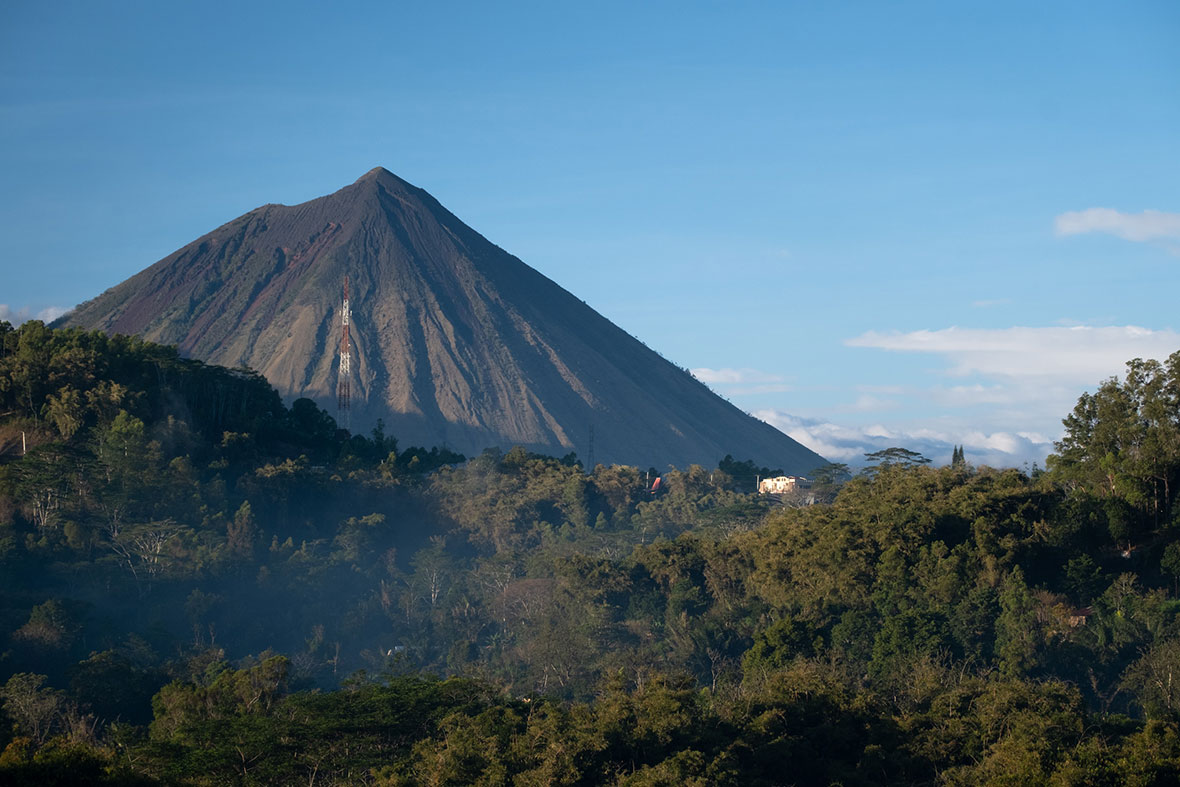
The plan, we convened, was to travel to the town of Bajawa, the main settlement in the central part of Flores, and climb Inerie, its highest volcano. At 2245 meters in height, this cone-shaped, dormant beast looms over Bajawa and the Savu Sea that separates Flores from the island of Sumba. The highlight is reaching the volcano’s crater rim, at whose highest point stands a series of Christian crosses, and enjoying unparalleled 360-degree views over a big chunk of central Flores and the surrounding sea.
Many hire guides to make the dark, blind and steep ascent in time for sunrise — but we preferred to have a go at adventure, and climb it by ourselves. “Many French blogs say it’s possible, someone even did it with kids in tow,” Steven had said — and that was enough to convince me that we could make it. After all, I have hiked and climbed many mountains around Asia.
Many French blogs say it’s possible, someone even did it with kids in tow.
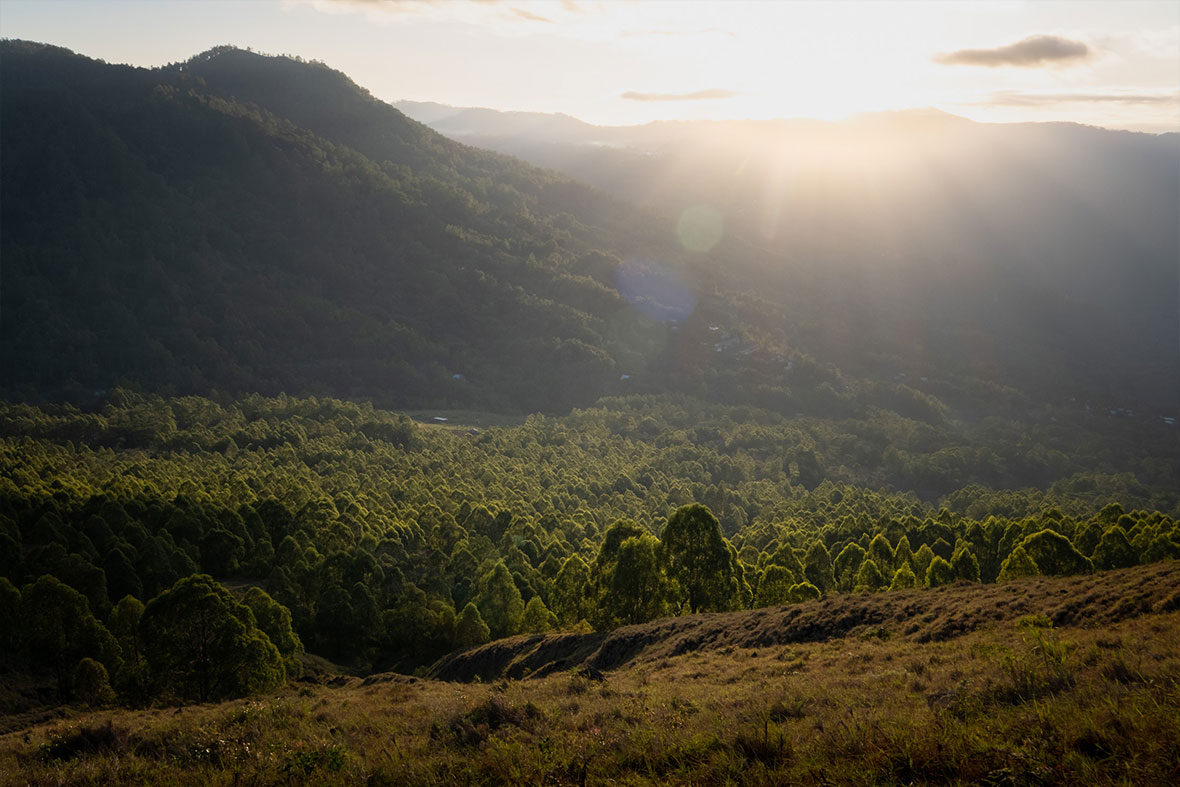
But now, at about 5.30 am with just about half an hour before daybreak, we were still struggling to find the beginning of the path. We bumped into a house, flashing lights against its shutters until a pair of eyes appeared between the blinds, and soon after, a sleepy man wrapped in a blanket rocked on the doorstep, undecided whether we were good or bad news.
“We want to climb Inerie,” I told him in Bahasa Indonesia, igniting his brain’s engine from the fog of sleep. “Do you know where the starting point of the path is?”
Turns out the guy was a local mountain guide and probably thought we were nuts. “Where is your guide? There are many paths, it’s easy to get lost,” he asked.
“Jangan risau — don’t worry,” I said. Still looking at us in semi-disbelief, the man pointed to a small road snaking behind his house. And off we went pondering if we had made the best decision as we left him standing there in the dark.
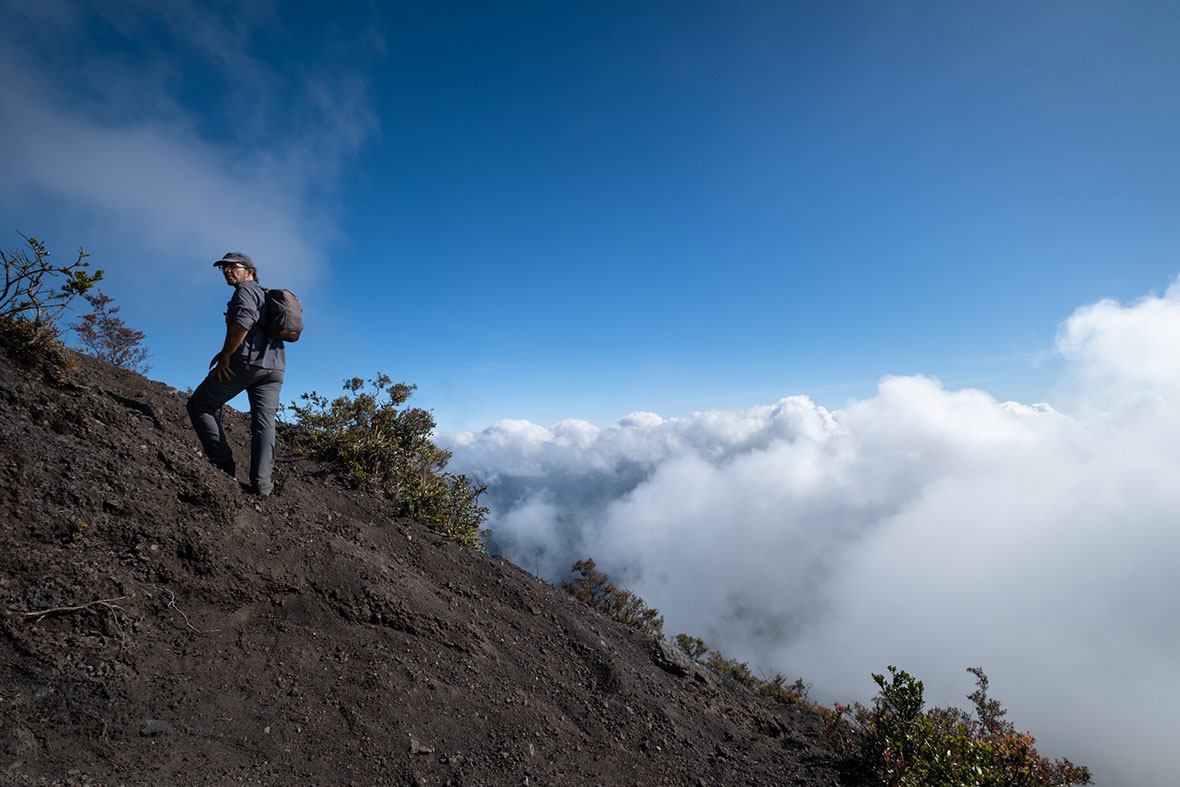
Pretty soon the path abandoned that last border of houses and brought us into volcano territory proper. Lush, tall blades of grass and shrubs with few trees accompanied us for the best part of an hour as the slope gently rolled upwards. By the time the first light of the day had risen behind us, tinting the grass and last remaining trees around us with an ethereal, golden and reddish hue, I turned around to see not just a breathtaking spectacle of misty forest and faraway, undulating sea — it seemed like we were already halfway up the mountain, and following a pretty well-visible path.
“So why do people say it’s so hard to climb?” I thought to myself. The fourth member in our group, Saied scrambled up before me, since from that point, the top of Inerie seemed within easy reach. But shortly after, I saw him sitting on the ground about ten meters ahead of me, breathing heavily.
“I need to rest for a bit, it’s getting tough,” he said. A dozen meters above us, Steven signaled that he would continue going up, and to take our time, before he disappeared behind a rock and beyond my field of vision.
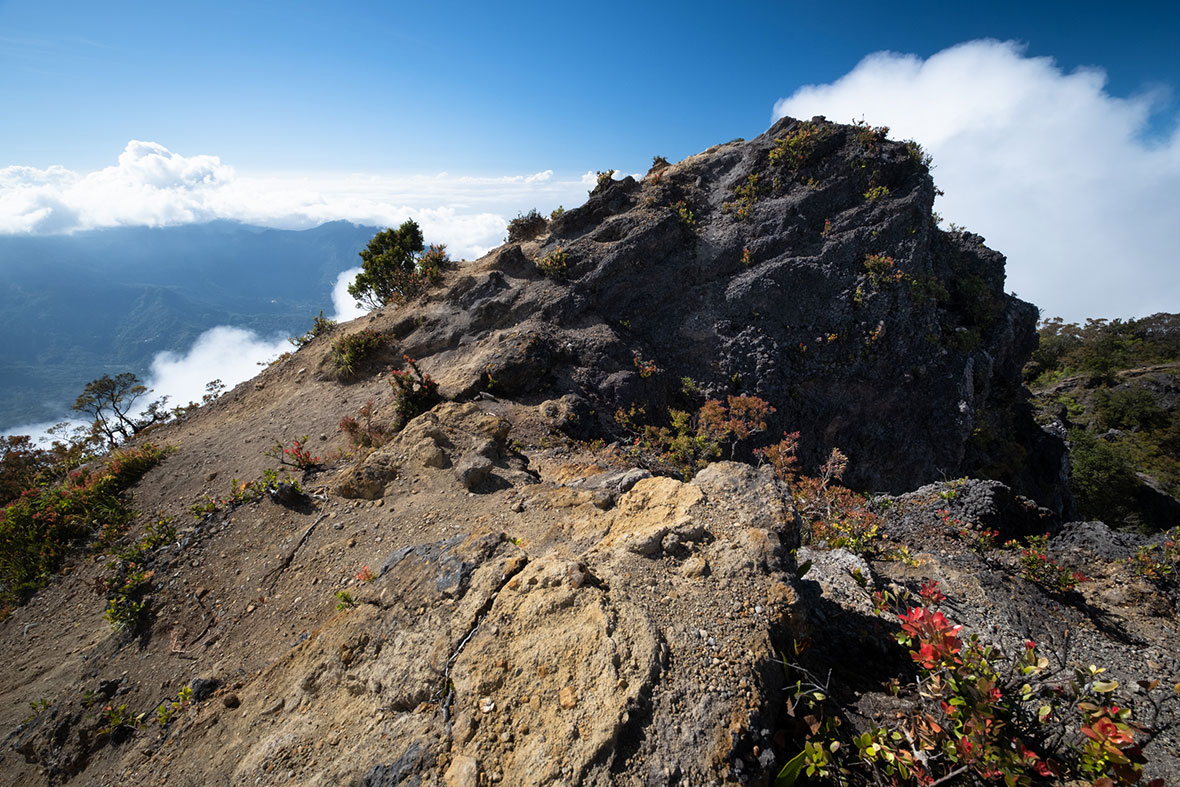
My job now was to keep the group together and go up — but soon enough, what was one visible path broke into a labyrinth of different possibilities. The vegetation ended abruptly, the earth morphed from something you can rely upon to a nightmare of sandy stone and pebbles, and the only way up was to scramble and hold onto anything we could.
One step forward, and often, three steps sliding back. The giant we were mounting was starting to show its teeth, disintegrating its outer layer of skin to keep us parasites far away from the crack at the top of its head.
But stubborn we were: trying to stay close together and helping each other to find the best way upwards, we scrambled through crevices of rock that if touched too hard would disintegrate between our fingers. Dead shrubs and jagged rocks became the only points of resistance in a crumbling, dusty (and frankly hard to breathe) universe. The sun, now well high above the horizon behind us, laughed at our attempts and kept teasing us with rays that became hotter and hotter against our skin.
But if I looked up, the blue sky, and the sea of clouds that twirled around the crater as if it were a magnet of mists, were both near — I could also feel the bitterness of the air, getting colder by the minute. And so I waved Saied and my wife a “see you soon and follow my lead”, and went up, pushing for the top.
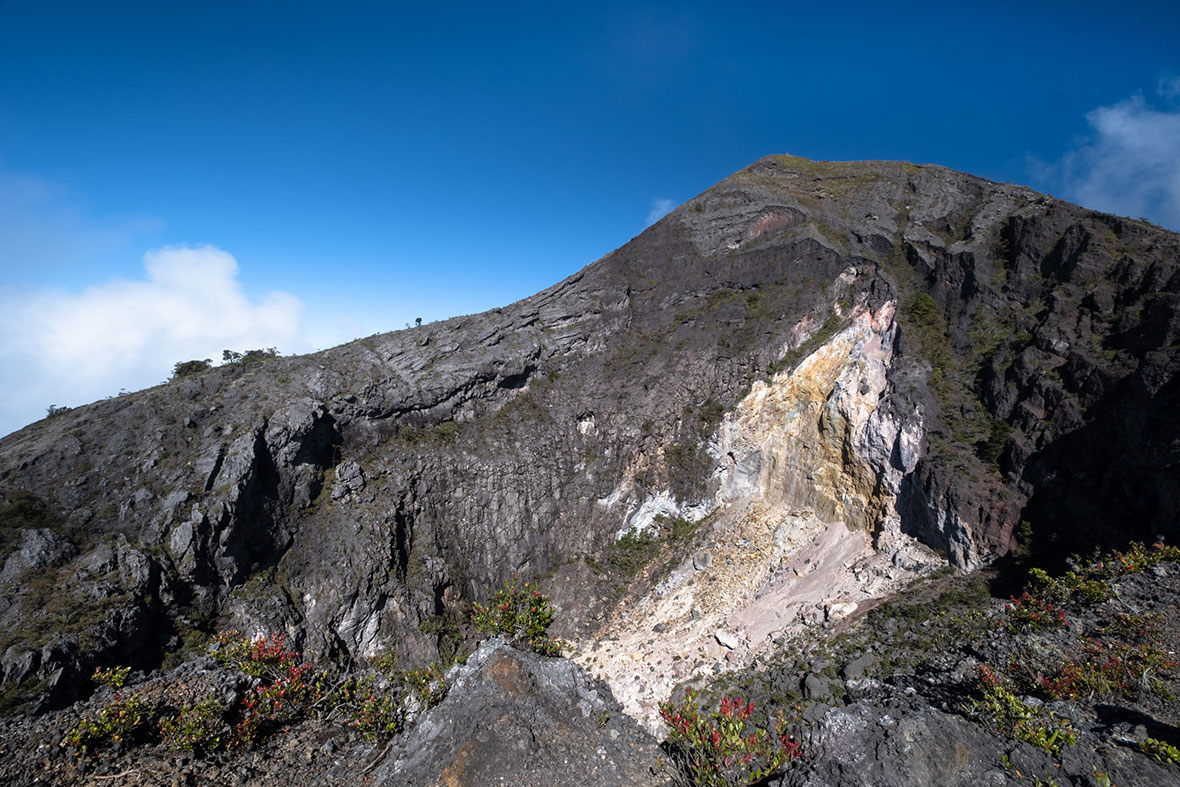
In less than twenty hard, sweaty minutes, I found the cracked head of Inerie, and Steven, curled right next to it, blood spilling from his fingers and forming weird patterns on the rocks around him. He cheered at me with the offended hand while he stuffed a greasy Indonesian doughnut into his mouth with the other.
“Congratulations on making it,” he said, and then explained, “I cut my fingers with my drone”. Turns out that while waiting for us to arrive, Steven had flown his drone to take some aerial shots, and when it was time to bring it back and grab it to security, the strong winds had moved it sideways, causing the blades to cut through two of his fingertips — thankfully not too deeply.
That was one small price to pay to sit up here and look inside Inerie’s open skull. Seen from up here, it looked like the ash-grey chalice that contains all of the world, strains of green sulfur encrusted like old wine at its very bottom. Then clouds started to come in from every corner, hovering above us, ready to close over that hole and hide that mountain away for the rest of the day — almost a daily occurrence in Bajawa’s panorama.
We sat there for a short spell, just the two of us and Inerie’s empty brain, before Saied and Kit Yeng, at last, slogged up and joined us on the rim. We all took a moment to look down into that abyss and realized that we had made it.
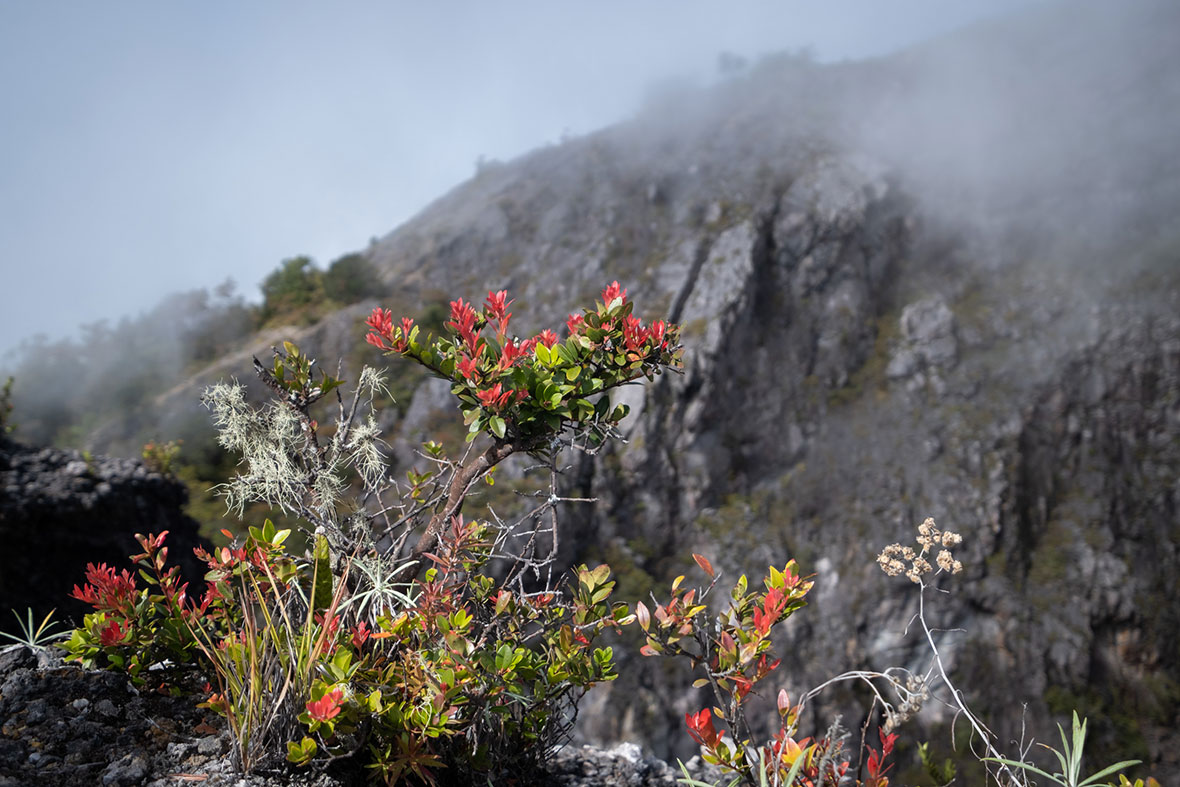
Going down was a different story. In the struggle to come up, we had forgotten to leave enough clear markers to find the exact way back from where we had come. Soon enough, we found ourselves ankle-deep in volcanic pebbles and ashes.
Inerie puffed dust into our nostrils and lungs as we descended all the way, sliding as if we were skiing down the side of the volcano. We fell, got up, and emptied our shoes of rocks and black sand a hundred and more times, while a scorching mid-morning sun floated above us like a burning light bulb.
We ultimately tumbled down the volcano and where the house was by keeping an eye out for the treeline, my legs feeling like jelly, hands scratched by falls, and sharp rocks.
The wife of the man who had sent us up the right way earlier seemed relieved to see us coming down again. “You made it,” she said, propping up four chairs on her veranda and offering a much-welcome jug of water. We all looked up at the summit, and saw it blanketed by a thick, vast layer of clouds — but earlier, and at least for a while, we had been able to pick Inerie’s brains. Personally, even if I felt devastated, I knew I was leaving the mountain wiser, stealing away a fraction of its ancient secrets.
